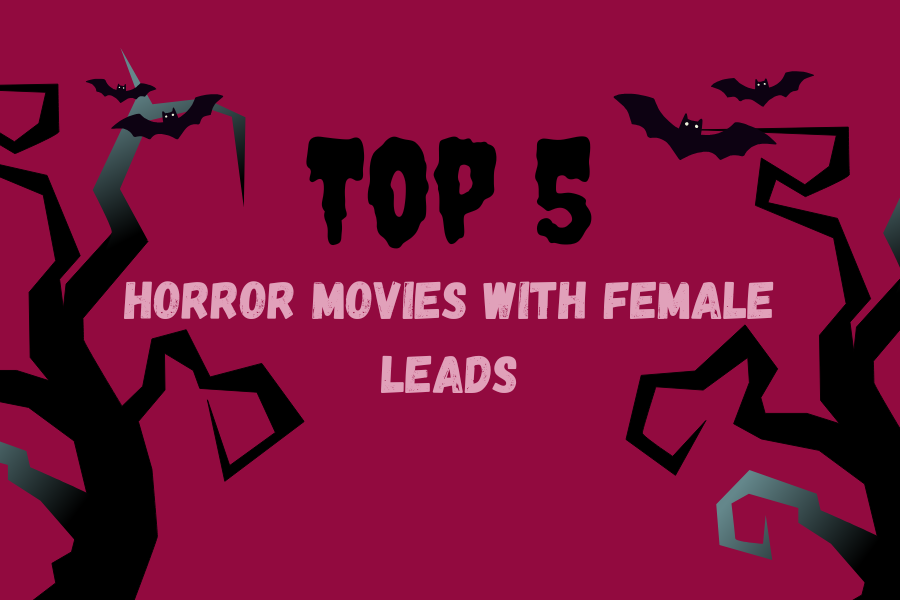The portrayal of women in horror films has evolved dramatically over time. In the past, female characters were often one-dimensional and sexualized, typically cast as the damsel in distress. They clumsily traipsed through obstacles until a final stand where the police swooped in to the rescue. As society has evolved, horror has too. Often horror movies are indicators of broader societal trends because they showcase innovation. In order to maintain scare factor and relevance, horror movies have embraced more complex representations of women in various roles. This shift is evident in recent films, where female characters are not only survivors but nuanced figures who drive the narrative. As a result, contemporary horror offers a richer exploration of gender dynamics, ultimately enhancing the genre as a whole. Here are the top five horror movies that are driven by women…
#5 “Ready or Not” (2019)
Samara Weaving as Grace in “Ready or Not” (2019) is an excellent example of the evolution of the “Final Girl.” This archetype—think Drew Barrymore in “Scream” or Jamie Lee Curtis in “Halloween”—is the leading woman who evades the killer because of her pure actions and is eventually saved by a male figure. Her personality serves as a blank canvas for the audience to project onto. They feel her pain and root for her to escape the situation, making the experience more engaging. In “Ready or Not,” Grace marries into an incredibly wealthy and eccentric family, only to realize that they have to kill her before morning. The setting of the beautiful mansion contrasts with her horrific night, and Weaving carries the emotional impact of the film. She transforms from innocent and composed to ragged and desperate, an unraveling that enables her to eventually escape, saving herself. When the police finally arrive Grace is sitting on the steps of the mansion weaving a bloodstained dress and provides a simple, one-word explanation: “in-laws.”
#4 “Pearl” (2022)
“Pearl” (2022) is the second movie in the “X” trilogy created by Ti West. Pearl, played by Mia Goth, embodies a 1920’s midwestern farmer’s daughter. She’s beautiful, dressed in red, white and blue, a symbol of the American dream for her German immigrant parents. This hazy characterization is quickly squashed, both literally and figuratively, as she smashes a chicken fetus and feeds it to her pet alligator. Traditional American imagery such as the lone farmhouse on top of the hill, fields of corn and dancers in kick lines are juxtaposed with Pearl’s mental decline. She is stuck waiting for her husband to return home from war, her parents require constant care and she is denied outside socialization due to the Spanish flu epidemic. Goth tells the story of a young girl dreaming of stardom who is constrained by her socioeconomic standing, thus resulting in her descent into madness. Despite her indefensible actions, there’s a high level of empathy that the viewer holds for her character and the trapped position she’s in. Pearl’s deeply human desires to be seen and heard are unattainable. This realization gives insight into the lack of autonomy women in the 20’s had over their lives and the struggles that accompany this trapped sensation.
#3 “Us” (2019)
Jordan Peale’s “Us” (2019) shines as a chilling psychological thriller, but what really cements it as a modern horror classic is Lupita Nyong’o’s captivating performance. The film centers around a family on vacation and their doppelgangers called the “Tethered” who emerge with the intention of tormenting the family and taking their places. Peale’s creative storytelling about the twisted nature of American class division, with Nyong’o as the perfect conduit, delivers a nightmarish experience for viewers. Nyong’o acts as Adelaide Wilson, the mother of the family, and Red, the “Tethered” version of Adelaide. Her talent for portraying the characters’ desire to protect their families is truly fascinating and a shocking revelation at the end of the movie will leave viewers eager to rewatch and uncover all the intricacies they may have missed.
#2 “Carrie” (1976)
An iconic book to movie adaptation is “Carrie” (1976) starring Sissy Spacek in the titular role. Carrie is juggling an abusive mother and incessant bullying as well as internal conflicts like understanding her own sexuality and trying to control the telekinetic powers she has somehow developed. The movie shines a light into the perils that high schoolers, especially girls, can experience. This struggle is taken to the next level through Spacek’s portrayal of Carrie. Witnessing her constant mistreatment and the disturbing coping mechanisms she adopts is deeply uncomfortable to watch. Additionally, the movie garnered high levels of critical acclaim the year it came out, with Spacek being nominated for Best Actress at the 49th Academy Awards, solidifying the power of women to dominate in the horror genre.
#1 “Midsommar” (2019)
In first place is Florence Pugh’s performance in “Midsommar” (2019). The emotionally driven plot and difficult topics it handles make it the perfect horror movie. Dani, played by Pugh, is struggling after experiencing incredible loss, so she travels with her boyfriend and his friends to a Swedish community in an effort to disconnect from her trauma. Strange things start happening, but Dani, in an emotionally vulnerable state without necessary support, doesn’t have the ability to walk away from the situation. The unsettling events, with people killing themselves, inbred prophets and bizarre rituals, reflect her inner turmoil and deep sense of isolation. Pugh’s performance is hauntingly powerful, capturing the fragility of grief and the desperation for belonging. Eventually, Dani must confront her pain and identity in a climax that leaves viewers questioning the cost of acceptance.










